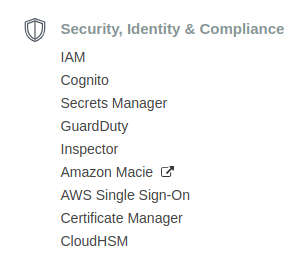Managing EC2 instances
Using the Puppet AWS module, you can manage several aspects of your AWS deployments. In this section, we'll show how to build an EC2 instance automatically, including the required networks/interfaces and security groups.
Getting ready
You'll need to install the aws-sdk gem:
t@mylaptop ~/cookbook $ sudo /opt/puppetlabs/puppet/bin/gem install aws-sdk Fetching: aws-sigv4-1.0.2.gem (100%) ... Done installing documentation for aws-sigv4, aws-partitions, ..., aws-sdk-workspaces, aws-sdk-xray, aws-sdk-resources, aws-sdk after 105 seconds
You'll need an AWS account; create one if you haven't already. The Free tier will work for the examples in this section. Log in to your AWS Console and create an API user. You will use the API user to create your AWS resources. Start by selecting IAM from the main console:

From IAM, select Users, then Add user. On the next screen, give your user a name and select Programmatic access, then click Next:

Select Attach existing policies directly and...

































































